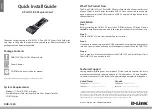
Chapter 2
Installation and Configuration
©
National Instruments Corporation
2-5
3.
When you first enter the BIOS setup program, it displays the
Main
menu.
Use the following keys to navigate through the BIOS setup program:
•
Left Arrow, Right Arrow
—Use these keys to move between different
setup menus. If you are in a submenu, these keys have no effect, and
you need to press <Esc> to leave the submenu first. (To use the arrows
on the numeric keypad, you must turn off Num Lock.)
•
Up Arrow, Down Arrow
—Use these keys to move between the
options within a setup menu. (To use the arrows on the numeric
keypad, you must turn off Num Lock.)
•
<Enter>
—Use this key to enter a submenu or to display all available
settings for a highlighted configuration option.
•
<Esc>
—Use this key to return to the parent menu of a submenu.
At the top-level menus, this key serves as a shortcut to discard the
configuration changes and exit the setup program.
•
<+>
and
<–>
—Use these keys to cycle between all available settings
for a selected configuration option.
•
<Tab>
—Use this key to select time and date fields.
•
<F9>
—Use this key to load the optimal default values for BIOS
configuration settings. The optimal default values are the same as the
shipping configuration default values.
Main Setup Menu
The most commonly accessed and modified BIOS settings are in the Main
setup menu. The Main setup menu reports the following configuration
information:
•
BIOS Version
and
Build Date
—These values indicate the version of
the PXIe-8130 controller BIOS and the date that the BIOS was built
on.
•
Processor Type
,
Speed
, and
Number of Cores
—These values
indicate the type of processor used in the PXIe-8130 controller,
the speed of the processor, and the number of processor cores.
•
System Memory
—This value indicates the size of system RAM
detected by the BIOS.
The Main setup menu also includes the following settings:
•
System Time
—This setting controls the time of day, which is stored
in a battery-backed real-time clock. Most operating systems also
















































